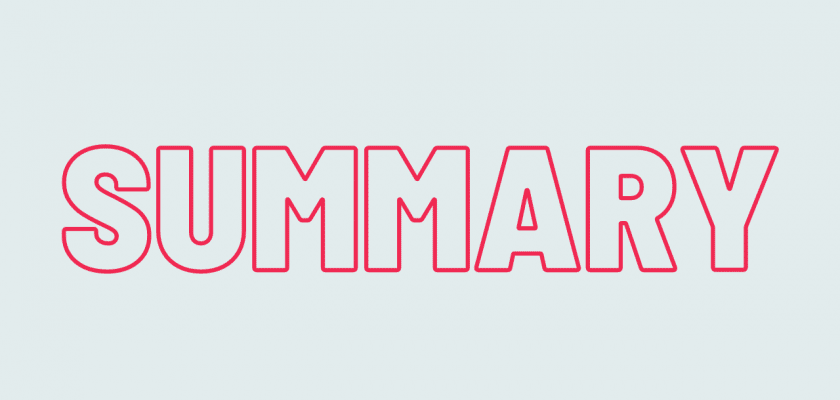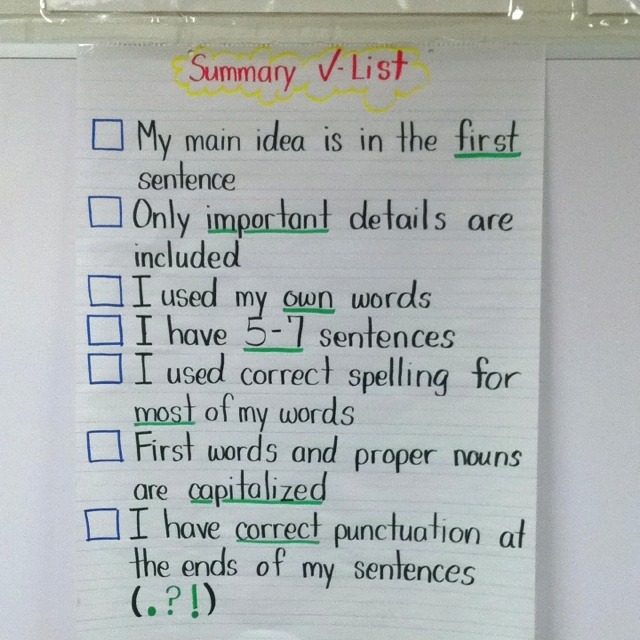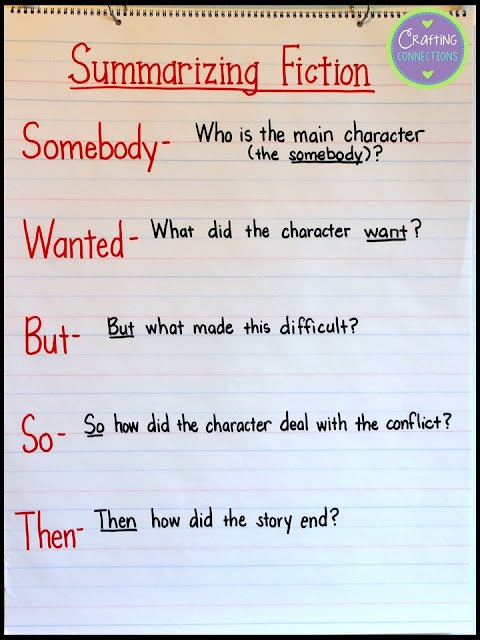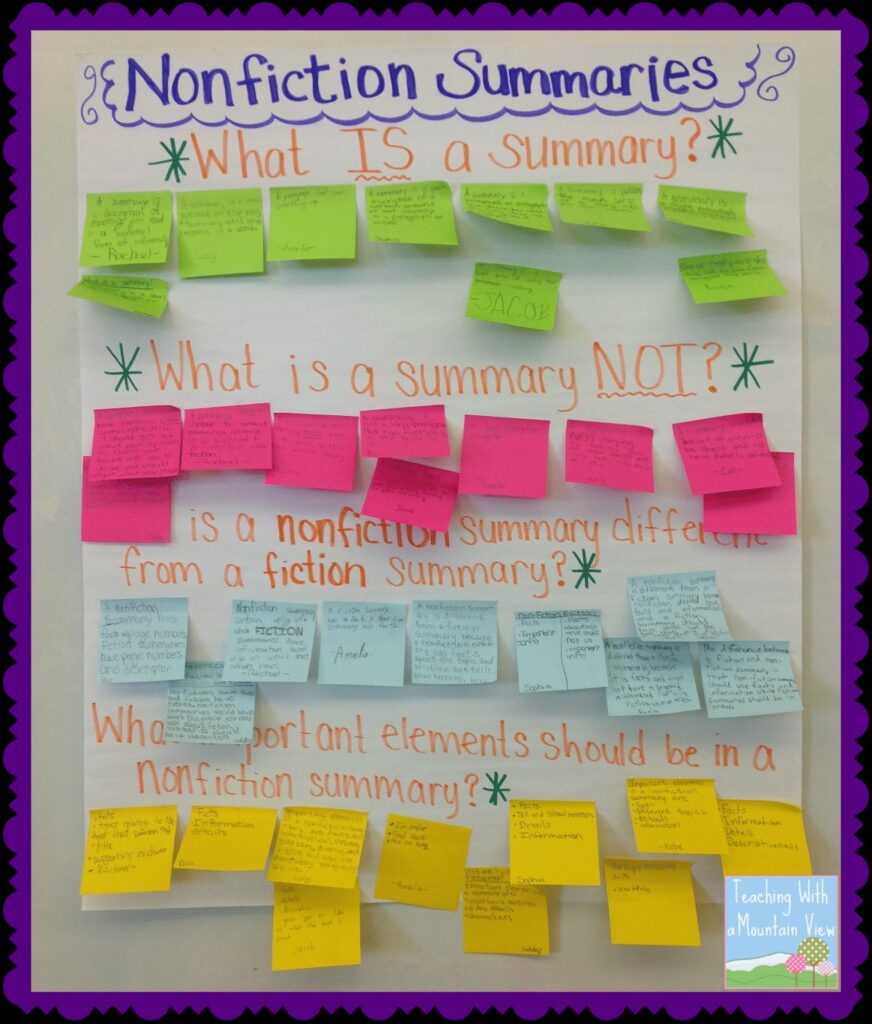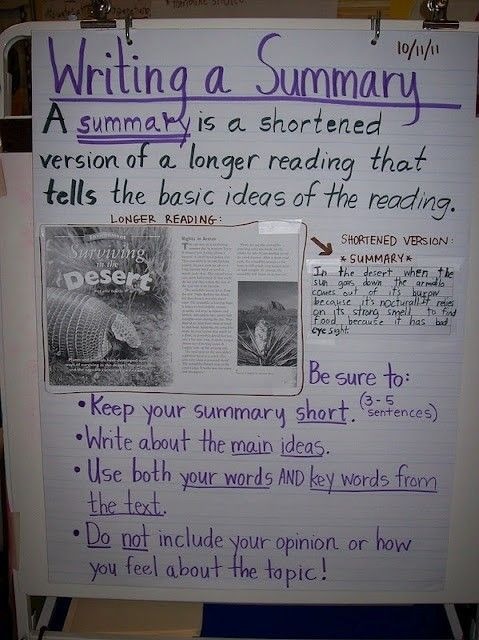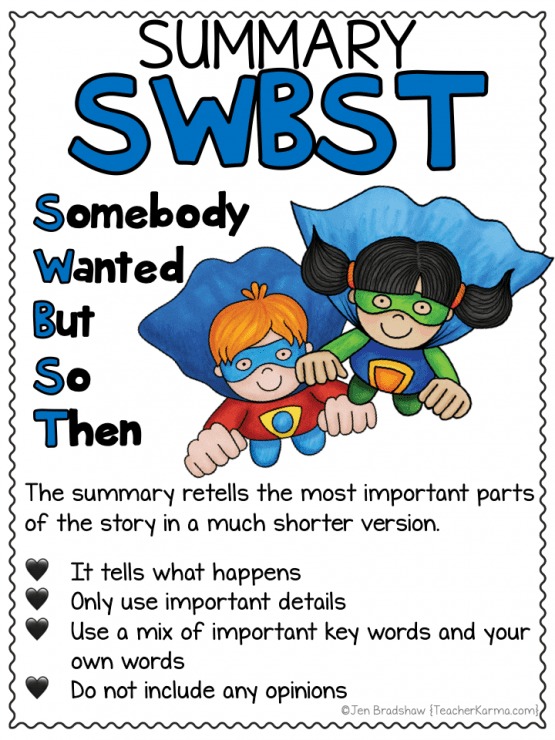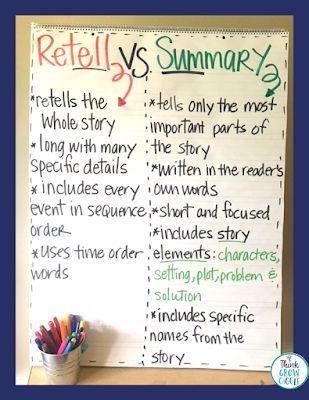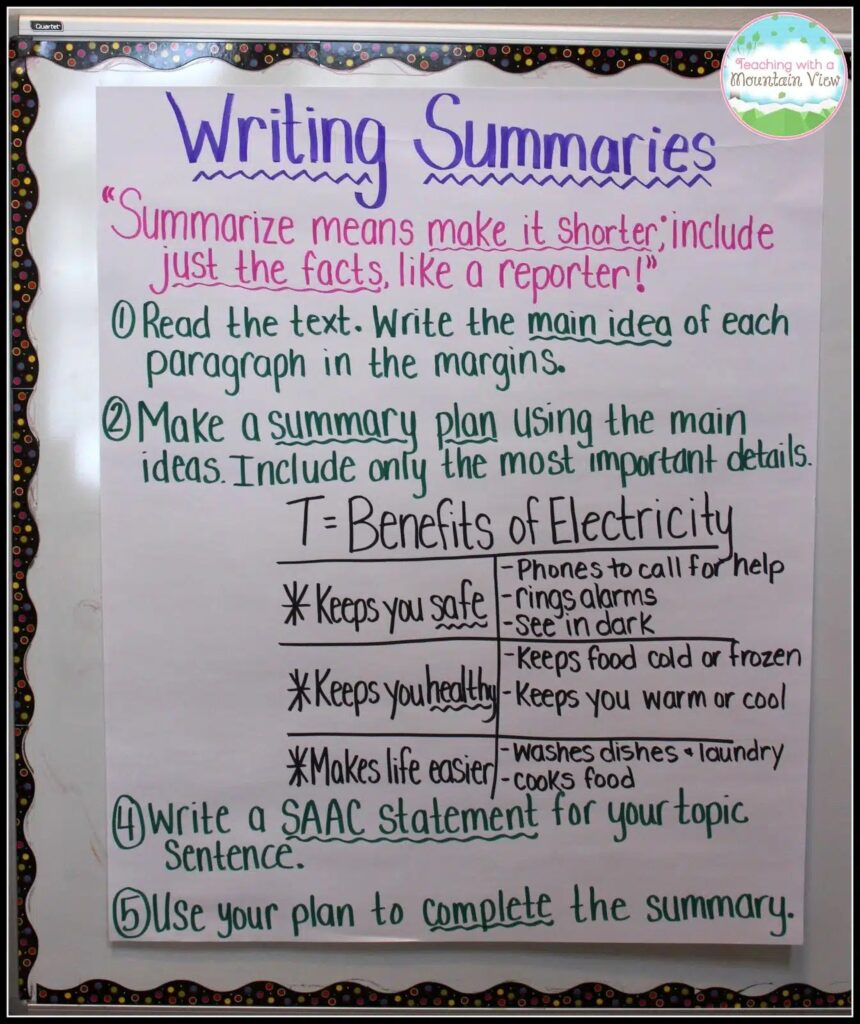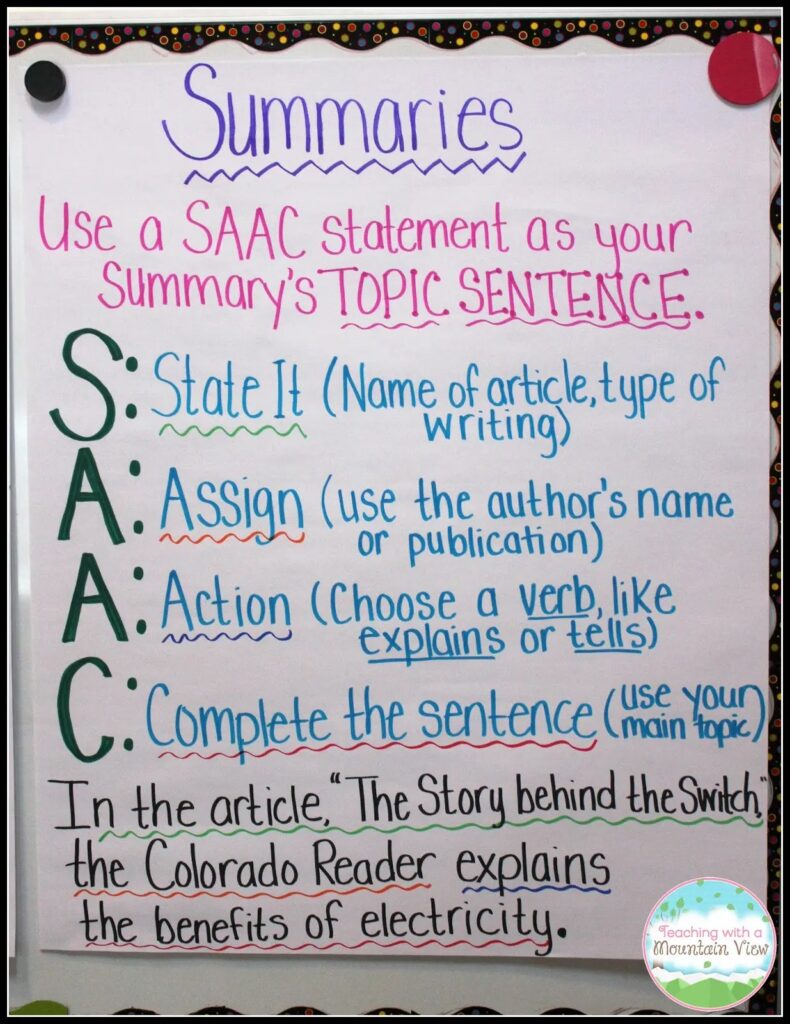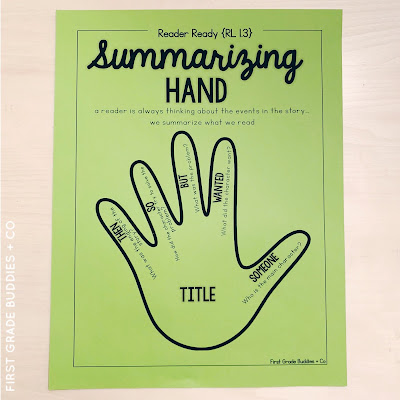It’s easier to write something longer than something short. We are usually much better at elaborating than getting to the point. This is why summarizing is an important skill for students to learn. You can help them do so with the aid of summary anchor charts.
In this unit, you will learn about using summary anchor charts in the classroom. I have also selected some good, useful examples of charts for you to use or to refer to when you make your own.
The elements that should go into a good summary anchor chart
The point of a summary anchor chart is to indicate to students the steps to take to write a concise version of a text. This means that a good anchor chart must make these very clear.
For all summaries:
- Pick out only the main points.
- Write in your own words.
For a nonfiction text:
- Don’t include extra details and quotes.
- Follow the structure of the text.
- Give the main idea of the text as the first sentence.
For a fiction text, follow the SWBST structure:
- SOMEBODY is involved
- They WANTED something
- BUT something/someone got in the way
- SO this is what they did
- THEN this is what happened
A really great summary anchor chart will provide space for students to work with an example on the chart itself.
Different ways of using summary anchor charts
Most summary anchor charts use different fonts and colors to identify the steps to take when writing a summary. Students work from this to summarize a text.
You can turn this around, so that the students begin with a text and work on a summary. They can then report about how they worked. Make an anchor chart with the common steps they took. Then, give them a reference anchor chart to compare their list to. This will help the students to see what they can add to, or take away from, their own method of writing a summary.
One of the anchor charts in the post uses an image of a hand to give the students the tips for writing a summary. This is a great approach, which makes the process more organic than putting the steps in a chronological order. Some students do work better with very specific, incremental steps, which are also used in some of the sample anchor charts.
Examples of anchor charts and how to use them
- Summary Tick List By Richard Hillyers
This summary tick list anchor chart is a great way to make sure your students have all the points.
This is an excellent anchor chart to use with any grade. It gives the students a guide to check their own work when they have written the summary. The font and layout look as though they have been taken out of a student’s notebook.
- Summarize Fiction From Crafting Connections
Your students can learn to summarize fiction with this chart.
An anchor chart that is color coordinated and set out in point form is easy for students to read. This is a great resource to act as a template. The red and black points and questions remain constant, while the blue (examples) can change. You can create your own anchor chart with only the points and questions. The students then fill in the examples from the text they are reading.
- Summarize Non-Fiction From With A Mountain View
They can also learn how to summarize non-fiction with this chart. Students will often be expected to summarize a nonfiction text, especially in the higher grades. This anchor chart is a very important resource. You would use it as a reference from which the students can work on their own summaries.
- How To Write A Summary From Teaching Expertise
With this anchor chart, you can teach grade 4s (and other grades) How to write a Summary.
What is valuable about this resource is the integration of an example with the guiding points. This makes it especially useful for students. Techniques have been used to draw attention to the different aspects, such as colors and outlines. You will need to work on different texts with this anchor chart, so that the students learn to apply the points when they work with a nonfiction text.
- Writing A Summary From We Are Teachers
With this anchor chart, your students will learn about writing a summary from an example.
This anchor chart contains the same information as the previous one, but uses a different example. The points don’t stand out dramatically, but they are presented clearly and are easy to read. Being able to replace the example on the actual chart is a great strategy. You can guide your students to create their own basic anchor charts, then apply them to different texts.
- Summary SWBST From Teacher Karma
This anchor chart is absolutely guaranteed to catch the students’ attention, with the superheroes. It uses the SWBST pattern, relating it to the characters so that it almost looks it is telling a story. The font is simple and clear and the students will not struggle to read the points.
- Retell Vs Summary From Think Grow Giggle
Teach your students about Retell vs Summary with this anchor chart. Often students fall into the trap of simply retelling the contents of the text to give what they think are the main points. This anchor chart compares retelling and summarizing, which makes it a valuable resource to teach them the differences between the two.
- Writing Summaries From Teaching With A Mountain View
These two anchor charts give a great strategy for writing summaries.
It is the combination of the two anchor charts that makes this such a useful resource. The first gives instructions about how to write the whole summary. The second chart elaborates on the SAAC statement, which is also an important skill to master. You can rework the details of the examples from individual passages. If you develop your own set of anchor charts, I suggest putting the examples on separate pieces of paper, so that you can stick them on, then replace them as the students work.
- Summarizing Hand From First Grade Buddies
The summarizing hand technique helps your students remember the stages of summarizing.
Resources that teach students to use something close by to remember approaches and rules are very effective. This anchor chart uses the fingers of the hand to teach students to remember the five points of working on a summary. When you create your own, I suggest using a larger font for the questions. Some color would also make the different points stand out.
Summarizing summary anchor charts
The most important thing about summary anchor charts is that they must clearly and concisely state the basic points to follow when summarizing a text. The most effective charts are those that give space for sample and practice texts to be added. This gives the students the information and examples right next to each other.
